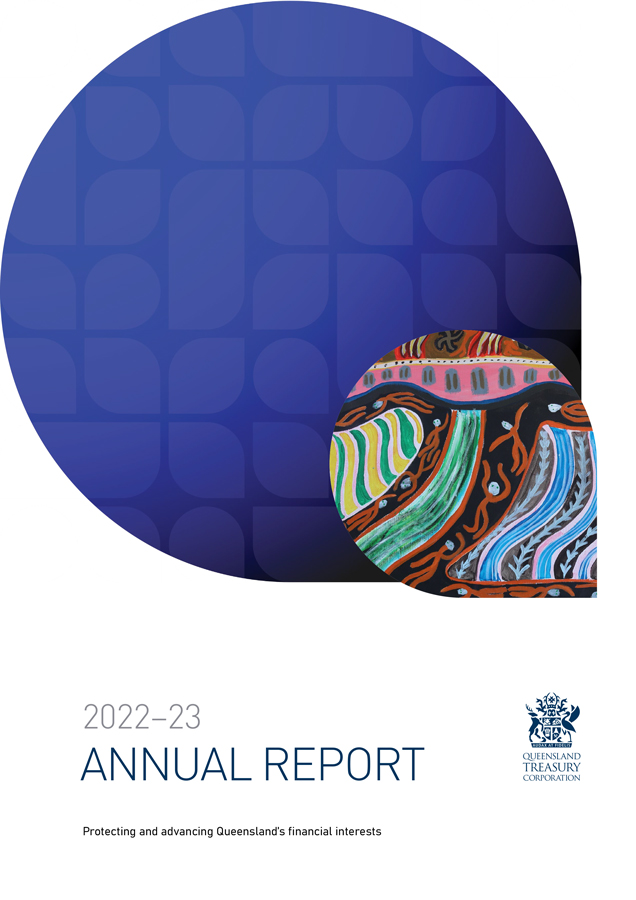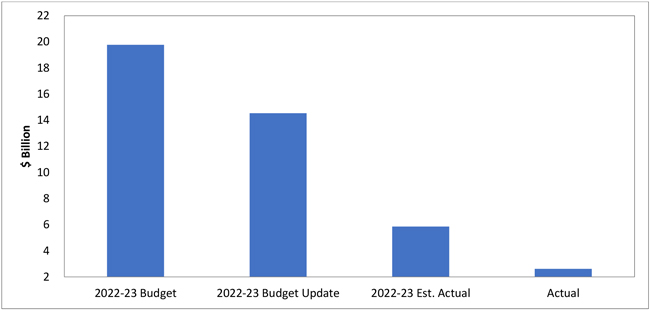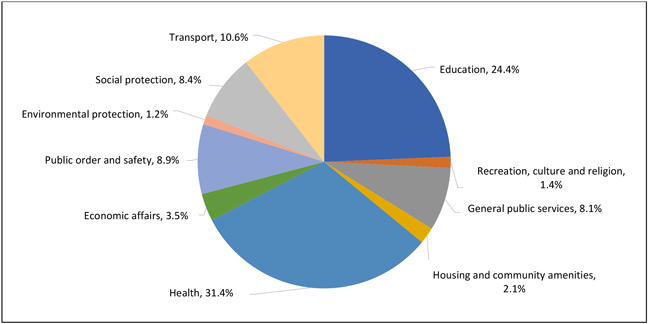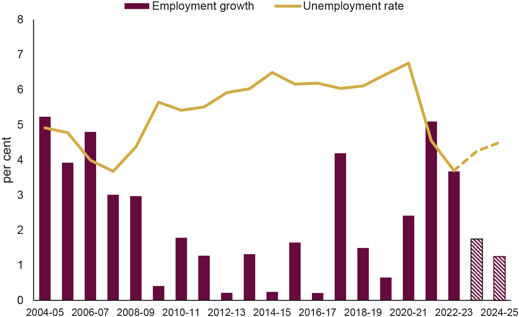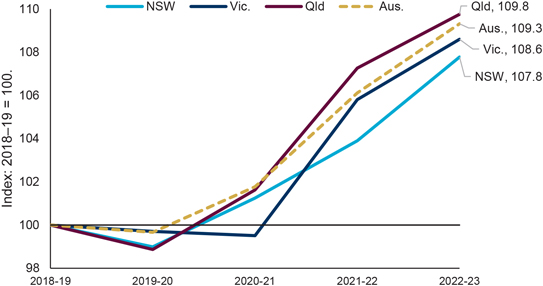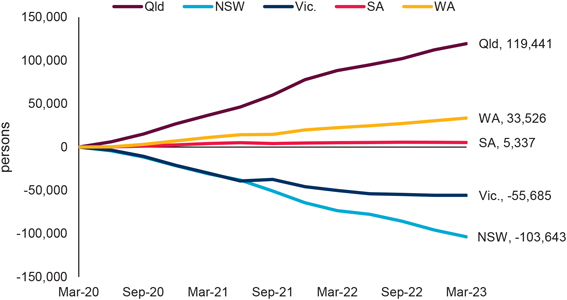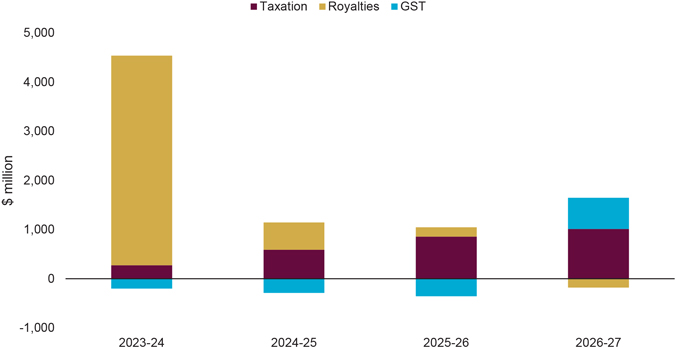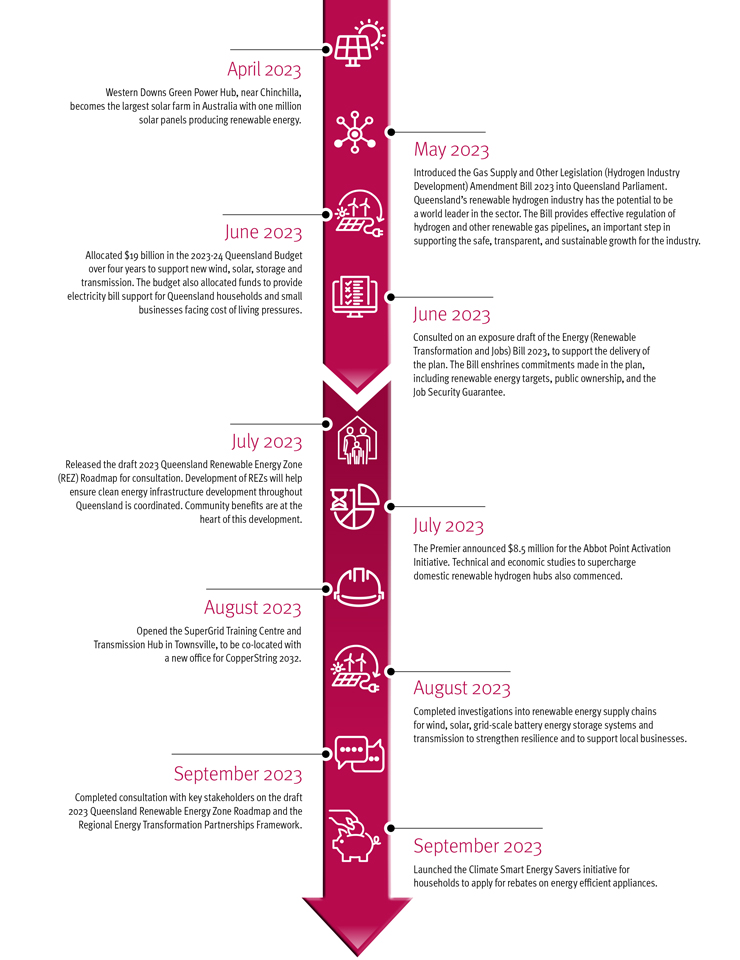| 21 | Key management personnel | |
Key management personnel are defined as those persons having authority and responsibility for planning, directing and controlling the activities of QTC, being members of the Board and the Executive Leadership Team.
QTC has delegated its powers to its two boards, the Capital Markets Board and SIAB. Both boards are appointed by the Governor in Council, pursuant to section 10(2) of the Act.
| (b) | Remuneration principles | |
Capital Markets Board - Directors
Any changes to Board remuneration require consideration by Queensland Treasury and the Department of the Premier and Cabinet to ensure remuneration is commensurate with government policy. Cabinet endorsement of any changes is required prior to approval by the Governor in Council. Remuneration was last increased effective 1 July 2012.
State Investment Advisory Board - Directors
When the Long Term Asset Advisory Board was renamed and reconstituted as SIAB on 4 July 2019, new external Board members were appointed who were entitled to remuneration. Remuneration for the new Board members was set by Queensland Treasury in consultation with the Department of the Premier and Cabinet prior to approval by the Governor in Council.
Executives and employees
QTC employees (including the Executive Leadership Team) are employed on individual contracts and are appointed pursuant to the Act. As the majority of QTC’s employees are sourced from the financial markets in which it operates, QTC’s employment practices are competitive with these markets. The remuneration framework comprises both fixed and variable remuneration (in the form of an annual short-term incentive (STI) opportunity), which are approved by the QTC Board annually. The fixed remuneration component is market-competitive and the variable remuneration component is linked to performance.
Remuneration governance
The Human Resources Committee of the Board is responsible for governance of remuneration practices and arrangements, with the Board maintaining ultimate responsibility and decision making for remuneration matters. QTC receives annual industry benchmarking data from the Financial Institutions Remuneration Group (FIRG) and Aon Hewitt, where applicable, which captures remuneration data from organisations within the financial services industry. QTC uses a subset of the data mapped to relevant organisations within the FIRG membership. Analysis and advice are obtained from external consultants to ensure that QTC continues to align roles to the market.
Total compensation
The total compensation fixed remuneration for QTC employees is reviewed each year and is benchmarked against the FIRG remuneration data and Aon Hewitt, where applicable. Total compensation levels were set around the FIRG market median position of a relevant sub-set of the FIRG database. Role scope and complexity, knowledge experience, skills and performance were considered when determining the remuneration level of each employee.
Variable remuneration - short-term incentives for employees
QTC’s variable remuneration framework provides an annual Short-Term Incentive (STI) opportunity for eligible employees, aligned to financial year performance. This opportunity is designed to differentiate and reward performance. It also aims to ensure market competitiveness, with ‘target’ STI outcomes aligned to the relevant market position of the FIRG database (i.e. the median incentive potential for FIRG members within QTC’s peer group) and approved at Board level each year. For the year ended 30 June 2023, STI payments will be made to eligible staff in September 2023.
Variable remuneration - short term incentives for the Executive Leadership Team
Members of the Executive Leadership Team (ELT), excluding members on secondment to QTC, are eligible for an STI if their performance meets or exceeds corporate and individual key performance indicators. STIs are at risk with no payment made for underperformance and additional premiums of up to 30% of the target paid for above expected performance.
STI payments are based on a percentage of individual total fixed remuneration with the STI ‘target’ range for permanent ELT members of between 40% and 50%. For acting ELT members, the STI payment is based on a percentage of their total fixed remuneration from their substantiative position, excluding any higher duties allowance for acting in a higher position. The STI ‘target’ for acting ELT members is 40%.
QTC’s overall performance for 2022-23, documented in the annual performance assessment reviewed and approved by QTC’s Board, was assessed as achieving the benchmark. This reflects the performance achieved across QTC’s whole-of-State, client, funding, and operational activities. This performance assessment led to individual STIs for the Executive Leadership Team of between 40% and 50% of fixed remuneration.
Deferral of short-term incentives for the Chief Executive Officer
The remuneration package for the Chief Executive Officer provides 40% of their determined STI to be deferred and paid over 24 months comprising two deferral periods:
| ∎ | | 20% paid out at the conclusion of 12 months after the original STI was determined, and | |
| ∎ | | 20% paid out at the conclusion of 24 months after the original STI was determined. | |
Payment of the deferred STI will be subject to satisfying the criteria outlined in the Risk Gateway Framework, which is defined in the Short-Term Incentive Risk Gateway and Deferral Policy. At the end of each deferral period, a report prepared by the Chief Risk Officer on the criteria in the Risk Gateway Framework will be assessed by the Board to determine whether the deferred STI will vest.
For 2022-23, the total STI entitlement for the Chief Executive Officer is $142,650, which includes the STI deferral of $57,060. The STI deferral has been fully expensed in 2022-23 and recognised as a long-term employee benefit.
